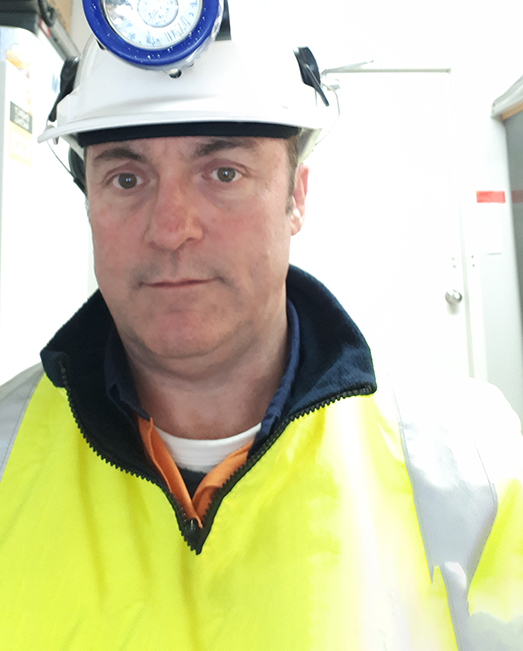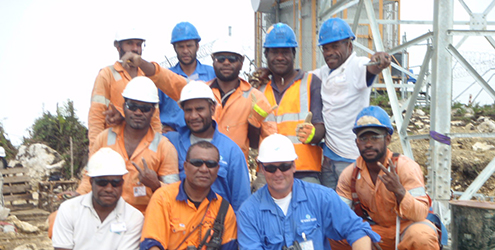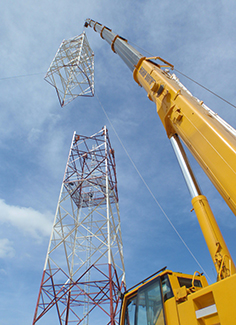Career
Copyright@ Australian Catholic University 1998-2025 | ABN 15 050 192 660 CRICOS registered provider: 00004G | PRV12008
Copyright@ Australian Catholic University 1998-2025 | ABN 15 050 192 660 CRICOS registered provider: 00004G | PRV12008

Campbell Reade remembers his time as a high-risk construction worker with a blend of fondness and bewilderment. He enjoys harking back to his early years on major building sites, like when he worked on the Darling Harbour project in the 1980s, or when he hoisted structural steel onto the sides of city skyscrapers.
“It was enjoyable work, but at the same time, a lot of guys were getting banged-up pretty bad back then,” says the 55-year-old Sydneysider.
“The general mindset in people was that the risk of turning up to work was that you could die, and in today’s settings, that’s quite rightly an unacceptable risk.”
At the time, workplace safety was in its formative years in Australia, following the formation of the now-defunct National Occupational Health and Safety Commission.
While Campbell’s job was to man the heavy machinery on site, he also felt a magnetism to the work that helped to keep people safe.
“I thought, ‘Well, workplace health and safety makes a great deal of sense to me, and I think it’s something I’d like to do’,” he recalls.
“So I was talking to the guys in the crib shed during smoko one day, and I said, ‘Hey, I want to be a safety officer’, and one of the guys said, ‘Mate, you’re too young’.”
In hindsight, Campbell thinks his workmate was probably right.
“I was only 19, and it was very much a fledgling industry at that point, but that was the beginning of the circle, way back then,” he says.

On site as safety manager in PNG.
“I had this idea that I could help to make the world a better, safer place for everybody, but I felt I needed to go out and get some experience in life first. If I could do that, then maybe one day I’d come back to that spot and complete the circle of my career.”
Campbell Reade’s long journey towards a career in health and safety continued in the 1990s.
After a period spent overseas as a rugby player in South Africa and England, he returned to Australia and fell back into the building industry.
As a skilled construction worker with various licenses and tickets, Campbell would often find himself in high-risk workplaces operating heavy cranes, forklifts and rigs.
“It gave me this really interesting window and insight into how workplace health and safety was being handled in different areas,” he says. “But I had a girlfriend at the time, and she said to me, ‘You’re crazy. You’re going to kill yourself doing that’.”
Campbell decided to pivot towards his other interests. He forged a new career in sports science as a personal trainer and gym instructor, and eventually ran a business in corporate training.
Around a decade on, however, he found himself back on a building site once again.
“I’d taken on this job with a steel erector,” he says, “and two days into the job, I find out that the guy I’d replaced had an accident and was killed on site the week before.”
The man had been working on an elevated platform when he was pinned against a wall. He died of asphyxiation, leaving behind his partner and young child.


“Suddenly I’m thinking, ‘Hang on, I got out of construction because it was too dangerous, and I’ve come back and replaced a man who was killed on site’.”
Finally, Campbell decided it was time to follow his instincts and pursue a career in health and safety.
“That experience, it made me see very clearly that the health and safety field affects real people, real lives,” he says.
“I’m an altruistic person. I’ve got this deep connection for humanity, and I’m one of those types of people who want to help. I knew it was time to devote myself to keeping people safe.”
Fast forward to 2022, and Campbell Reade’s career circle is now complete.
For more than 15 years, he has worked in health and safety across a range of industries — including in construction — as both an employee and a high-level consultant.
He has a Master of Occupational Health, Safety and Environmental Management from ACU under his belt, and he’s midway through his PhD in occupational health and safety, focused on another fledgling industry: the gig economy.
In recent years, the safety of workers completing tasks through rideshare and delivery apps and online marketplaces has come under the spotlight, with concerns that people’s safety is at risk.
Campbell’s research will look into the safety management processes of businesses in this new industry, with a focus on food and parcel delivery, and point-to-point taxi-like services.
“It’s a very exciting time for us as a research team, because we’re quite sure we’re going to find new things and create new understandings that we’ll be able to report back to the community,” says Campbell, who is also a branch committee member with the Australian Institute of Health and Safety (AIHS), and is in the talent pool for SafeWork NSW.
“The hope is that the research we’re undertaking can help to shape policy in future, but also help to educate people about safety and risk, and make these workers safer and happier as a result.”
Meanwhile, Campbell has no regrets of the roundabout path he’s taken to get to this point in his career. He looks forward to many more years of work, helping to keep people safe.
“I know I started late in life, but workplace health and safety isn’t ageist,” he says.
“You can be young, you can be old, you can be in the middle – it’s all good. We’re all humans and we all want to help each other, and I find that people tend to be in this space for that reason: they’re humanists who want to help others, and who want to see things improve for everyone.”
Keen to pursue a career in occupational health, safety and environmental management? Explore the options.
Copyright@ Australian Catholic University 1998-2025 | ABN 15 050 192 660 CRICOS registered provider: 00004G | PRV12008